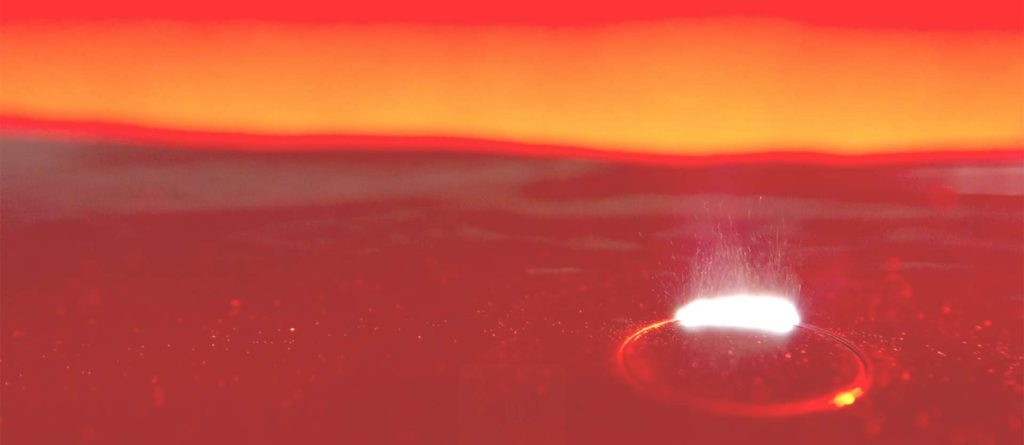Heat is energy transfer from one location to others. How much and how quickly the energy is transferred is determined by the material’s properties: thermal conductivity, heat diffusivity, etc. Generally, metals have a higher heat spreading than dielectrics like glass. When designing a laser micromachining tool, engineers must consider how to minimize this heat spread as it leads to collateral damage and reduces machining precision. In the laser machining industries, this heat spread is characterized by heat-affected zone (HAZ).
What is the Heat-Affected Zone?
The heat-affected zone creates microstructural alterations in large surroundings of energy deposition. One can find heat-affected zones even without a laser.

Let’s take an oxyfuel flame torch used to cut steel, which cuts steel by continuously heating up the workpiece to melting. The cut pieces will show re-casted material in irregular shapes in heat-affected zones. Basically, this is due to a lack of proper control of the energy deposited by the torch. Ideally, all the energy would be consumed exclusively for melting the cuts. Without careful engineering, however, the waste of energy in creating a heat-affected zone is inevitable. It may even be impossible to eliminate the heat-affected zone in oxyfuel flame applications.
Is there a way to eliminate this heat-affected zone and achieve the required quality and precision of the cuts?
Heat-Affected Zone in Laser Machining
Laser material processing is known to provide much better control of the heat-affected zone than conventional non-laser based technologies. Especially for micromachining industries, the laser has not only become a workhorse but has also often been considered as the enabler. A continuous wave (CW) or pulse laser in milli- to nanoseconds has found widespread industry applications early on, but pulse lasers in particular have expanded their realm of field. That is because engineers have much better control of the energy deposition, enabling a reduction in the build-up of heat-affected zones.
Moreover, based on the mechanisms of the laser ablation it becomes clear that the essential controllability of the heat-affected zone lies in the time of the laser interaction. The idea is to deposit sufficient energy for processes (being melting, welding, or ablating) quickly before the heat diffusion starts dominating.
See our previous blog for the details of the laser ablation in an extremely short time span: What Does Cold Ablation Really Mean?
Femtosecond laser micromachining uses extremely short (10-15 seconds) laser pulses to rapidly deposit a large amount of energy into a laser spot. This is the shortest commercially available laser pulse – an essential property for successfully reducing that thermal build-up. The high confinement of the laser energy can be effectively consumed for ablation without building up heat in the material, eliminating the heat-affected zone. The femtosecond results clearly demonstrated the best precision and quality among laser machinings. Therefore, when it comes to heat-affected zone control, the femtosecond laser provides the most precise tool currently available.
Read More: A Guide to Femtosecond Lasers
Femtosecond Micromachining with IMRA
IMRA specializes in fiber-chirped pulse amplification (FCPA) technology for patterning and cutting a broad range of materials. If you would like any more information about how we can reliably quench the effects of thermal diffusivity in micromachining applications, simply contact a member of the IMRA team today.

